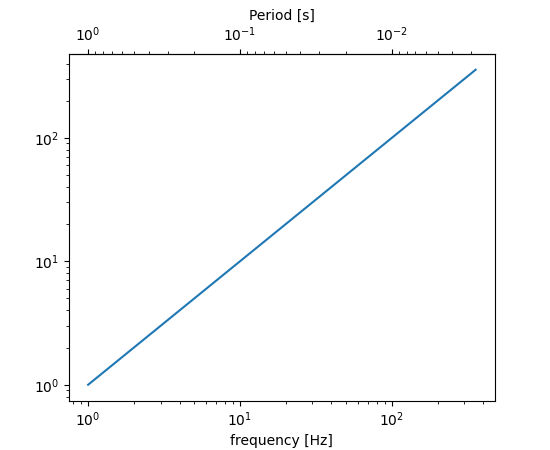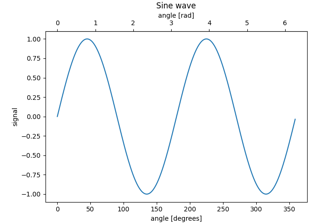matplotlib.axes.Axes.secondary_xaxis¶
-
Axes.secondary_xaxis(self, location, *, functions=None, **kwargs)[source]¶ Add a second x-axis to this axes.
For example if we want to have a second scale for the data plotted on the xaxis.
Parameters: - location{'top', 'bottom', 'left', 'right'} or float
The position to put the secondary axis. Strings can be 'top' or 'bottom' for orientation='x' and 'right' or 'left' for orientation='y'. A float indicates the relative position on the parent axes to put the new axes, 0.0 being the bottom (or left) and 1.0 being the top (or right).
- functions2-tuple of func, or Transform with an inverse
If a 2-tuple of functions, the user specifies the transform function and its inverse. i.e.
functions=(lambda x: 2 / x, lambda x: 2 / x)would be an reciprocal transform with a factor of 2.The user can also directly supply a subclass of
transforms.Transformso long as it has an inverse.See Secondary Axis for examples of making these conversions.
Returns: - axaxes._secondary_axes.SecondaryAxis
Other Parameters: - **kwargs
Axesproperties. Other miscellaneous axes parameters.
Warning
This method is experimental as of 3.1, and the API may change.
Examples
The main axis shows frequency, and the secondary axis shows period.
(Source code, png, pdf)

